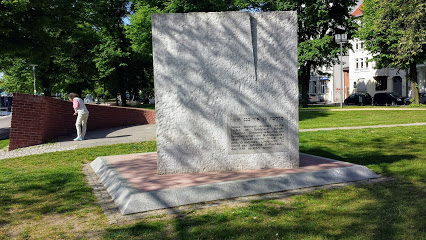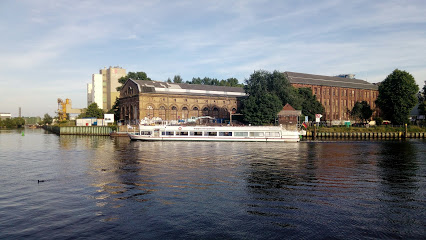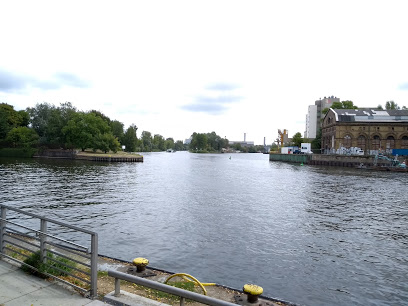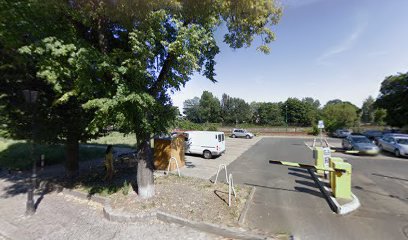Before Altstadt-Steg reaches the river Havel, it crosses through a pretty playground that looks very much like a river and floodplain landscape. Children have great fun climbing and balancing on the playground elements built to look like fishing nets, fish traps and river mussels. Past the playground, a memorial shaped like a split stone and a bright column commemorates Spandau’s association synagogue that was built close to here in 1895. It was destroyed by a fire that was deliberately lit in the Night of Broken Glass from 9 to 10 November 1938. Inside the memorial, an eternal flame is lit as a sign of remembrance. Bearing the words »Everyone has a name«, a name wall remembers the Jewish citizens of Spandau who were deported and murdered during Nazi rule.
Next to the memorial is a lawn where visitors can relax and idly watch the water flowing by. Now we move to Juliusturmbrücke; the underpass beneath this bridge has been transformed into an exciting activity trail with different bubble-like hills made of plastic and steel.
At the southern end of Lindenufer, a batardeau, a structure to regulate water levels, dates back to 1842 and is a reminder of the former fortification of Spandau’s historic town district. Just a short distance from here, Lindensteg leads us to Stabholzgarten. This name recalls the salt barrels (previously referred to in German as »stabholz«) which the Royal Salt Office stored here up until 1749. This garden-like park has been welcoming visitors since 2006 with a spacious lawn, shady trees, roses and other flowering plants as well as many benchese.





